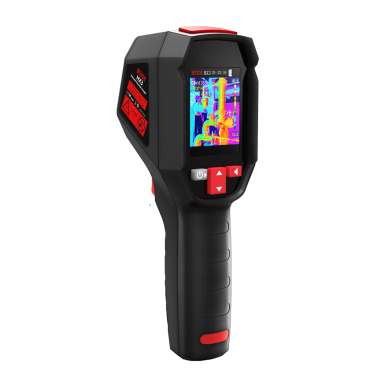
,文章要详细,字数在1000字以上
html
Infrared Thermometer: A Non-Contact Temperature Measurement Tool
Introduction to Infrared Thermometers
Infrared thermometers, also known as IR thermometers or laser thermometers, are innovative devices designed to measure temperature from a distance without making physical contact with the object being measured. These tools have revolutionized temperature measurement across various industries, from healthcare to manufacturing, by providing quick, accurate, and non-invasive readings.
The principle behind infrared thermometers is based on detecting infrared radiation emitted by all objects above absolute zero temperature. Every object emits thermal energy, and the intensity of this radiation increases with temperature. Infrared thermometers capture this radiation and convert it into an electrical signal, which is then processed to display a temperature reading.
How Infrared Thermometers Work
Infrared thermometers operate on the fundamental principles of thermodynamics and optics. The key components of an IR thermometer include:
- Optics system to collect infrared radiation
- Detector to convert infrared energy into an electrical signal
- Signal processing unit to analyze the data
- Display to show the temperature reading
The measurement process begins when the thermometer’s lens focuses infrared energy from the target object onto a detector. The detector, typically a thermopile, converts the infrared energy into an electrical signal. This signal is then amplified and processed by the thermometer’s electronics, which compensates for ambient temperature and other factors before displaying the temperature reading.
Key Features of Infrared Thermometers
Modern infrared thermometers come with various features that enhance their functionality and accuracy:
Keyword: infrared thermometer
Distance-to-Spot Ratio
This important specification indicates the size of the measurement area relative to the distance from the target. A higher ratio means you can measure smaller targets from farther away. For example, a 12:1 ratio means that at 12 inches from the target, the thermometer measures a 1-inch diameter spot.
Emissivity Adjustment
Different materials emit infrared radiation with varying efficiency. Emissivity adjustment allows users to compensate for this variation, ensuring accurate readings across different surfaces. Most materials have emissivity values between 0.1 (shiny metals) and 0.95 (matte surfaces).
Temperature Range
Infrared thermometers are available with different temperature measurement ranges, from basic models that measure -50°C to 500°C (-58°F to 932°F) to industrial models that can measure up to 3000°C (5432°F).
Response Time
High-quality infrared thermometers can provide temperature readings in less than one second, making them ideal for applications where quick measurements are essential.
Applications of Infrared Thermometers
The non-contact nature of infrared thermometers makes them valuable tools in numerous fields:
Medical Applications
In healthcare, infrared thermometers are widely used for measuring body temperature, especially during situations requiring quick screening of multiple individuals, such as during disease outbreaks. They minimize cross-contamination risks compared to traditional contact thermometers.
Industrial Maintenance
Infrared thermometers help maintenance professionals detect overheating components in electrical systems, motors, and mechanical equipment, allowing for preventive maintenance before failures occur.
Food Safety
In commercial kitchens and food processing plants, infrared thermometers provide instant surface temperature readings of food products, cooking surfaces, and storage areas, helping maintain proper food safety standards.